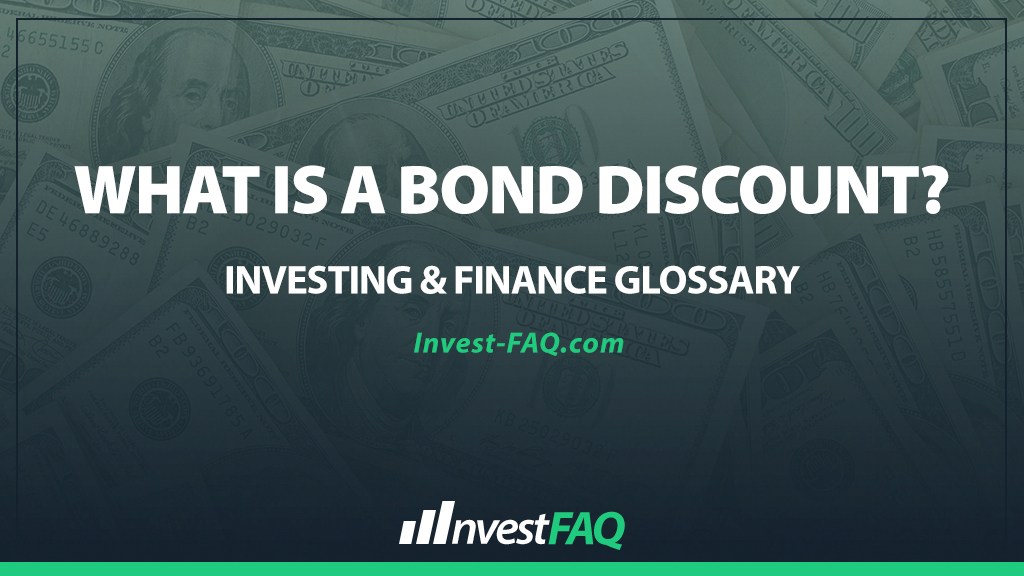
Bond Discount
Contents
A bond discount occurs when the market price of a bond is lower than its face value or par value. This situation typically arises when the bond’s coupon rate—the interest rate it pays—is lower than the prevailing market interest rates, making the bond less attractive to investors unless it is sold for less than its nominal value.
For businesses issuing bonds, selling at a discount can be a way to attract investors despite offering a lower interest rate than the current market rate.
While it allows an issuer to raise capital, the discount also means that the issuer will effectively pay more in interest costs over the life of the bond, as the bond will still be redeemed at its full face value at maturity.
For investors, buying discounted bonds can be an opportunity to earn greater returns compared to the bond’s stated coupon rate, especially if held to maturity.
Example of a Bond Discount
Consider “Green Energy Solutions” issuing a $1,000,000 bond with a coupon rate of 5% when the market rate is 6%. To compensate for the lower interest payments, the bond is issued at a discount, say for $970,000.
In “Green Energy Solutions” accounting records, this transaction would be recorded as:
Cash (Asset): Increase by $970,000, reflecting the proceeds from the bond issue.
Bonds Payable (Liability): Increase by $1,000,000, representing the face value of the bond to be repaid at maturity.
Discount on Bonds Payable (Contra-Liability): Increase by $30,000, which is the difference between the face value and the issuance price ($1,000,000 – $970,000).
The discount on bonds payable acts as an additional interest expense over the life of the bond, beyond the coupon payments.
“Green Energy Solutions” will amortize this discount over the bond’s term, gradually reducing the discount and increasing the carrying amount of the bond to its face value by maturity.
This amortization process increases the total interest expense recognized in the income statement, reflecting the true cost of borrowing.
Significance for Investing & Finance
The concept of a bond discount is significant in accounting for several reasons:
Accurate Representation of Borrowing Costs: It ensures that the financial statements accurately reflect the true cost of borrowing, including both the stated interest payments and the effective interest resulting from issuing bonds at a discount.
Compliance with GAAP: Accounting for bond discounts is required under Generally Accepted Accounting Principles (GAAP), ensuring consistency and transparency in how debt is reported.
Investment Valuation: For investors, understanding bond discounts helps in assessing the potential yield of a bond investment, especially in comparison to the market interest rates.
Strategic Financial Planning: For issuers, the decision to sell bonds at a discount affects long-term financial planning, as it impacts cash flows and interest expenses.
In summary, a bond discount is a critical financial concept that affects both bond issuers and investors.
It plays a key role in the issuance and trading of bonds in the capital markets, impacting accounting practices, investment decisions, and financial planning.
FAQ
How is the amount of a bond discount determined at issuance?
The amount of a bond discount is determined by the difference between the bond’s face value and its selling price, which is influenced by the discrepancy between the bond’s coupon rate and the prevailing market interest rates at the time of issuance.
What are the implications of a bond discount for an investor?
For an investor, purchasing a bond at a discount means the potential for a higher yield compared to the bond’s stated coupon rate, as the investor benefits from the increase in value of the bond when it matures at its face value.
How does amortizing a bond discount affect a company’s financial statements?
Amortizing a bond discount increases the company’s interest expense over the life of the bond, thereby reducing net income and increasing the carrying value of the bond liability on the balance sheet to its face value by maturity.
Can a bond be sold at a discount on the secondary market after issuance?
Yes, a bond can be sold at a discount on the secondary market if interest rates rise after issuance, making the bond’s lower coupon rate less attractive to investors unless the price is adjusted downward.
